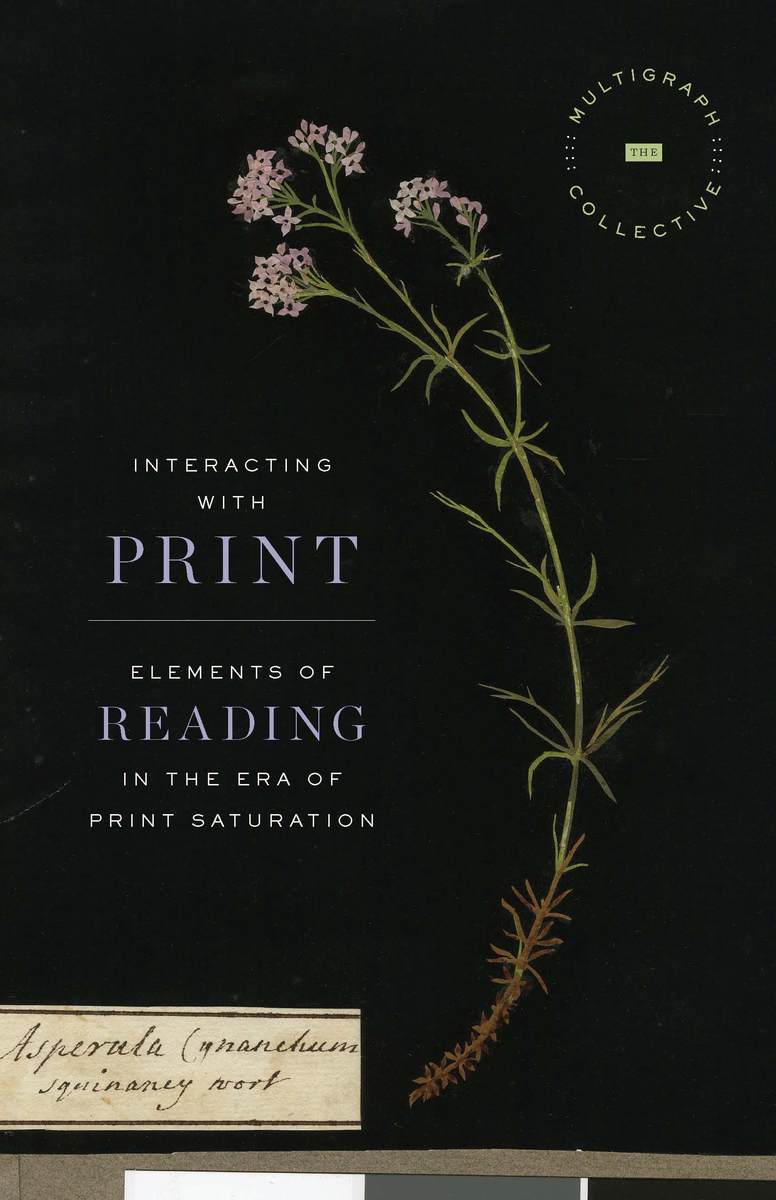
Interacting with Print: Elements of Reading in the Era of Print Saturation
2019Typology category
authorshipISBN-13
Publisher
Author
Publication year
Entry last updated
2024-12-01Publisher's description
Experimental aspects:
The Multigraph Collective is a team of twenty-two scholars at sixteen universities in Canada, the US, and the UK. Its members are Mark Algee-Hewitt, Angela Borchert, David Brewer, Thora Brylowe, Julia Carlson, Brian Cowan, Susan Dalton, Marie-Claude Felton, Michael Gamer, Paul Keen, Michelle Levy, Michael Macovski, Nicholas Mason, Nikola von Merveldt, Tom Mole, Andrew Piper, Dahlia Porter, Jonathan Sachs, Diana Solomon, Andrew Stauffer, Richard Taws, and Chad Wellmon. As the larger group came together, Piper had the idea of disseminating the work through an ambitious collaboration: a jointly authored book that would draw on everyone’s research interests, with writing and editing undertaken electronically, via wiki software. Anyone would be able to write or revise, insert or delete, expound or qualify. The book wouldn’t have one author but 22, each taking responsibility for all of its contents: instead of a monograph, it would be a “multigraph.” (The word wasn’t Piper’s originally, but it fit.) And so a massive collaborative enterprise—which came to be called the Multigraph Collective—was born.